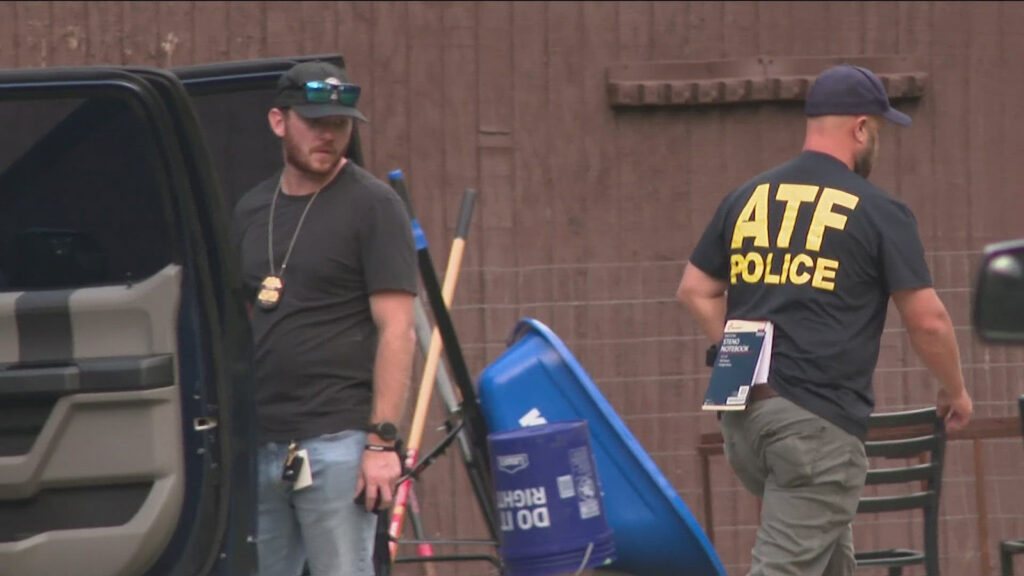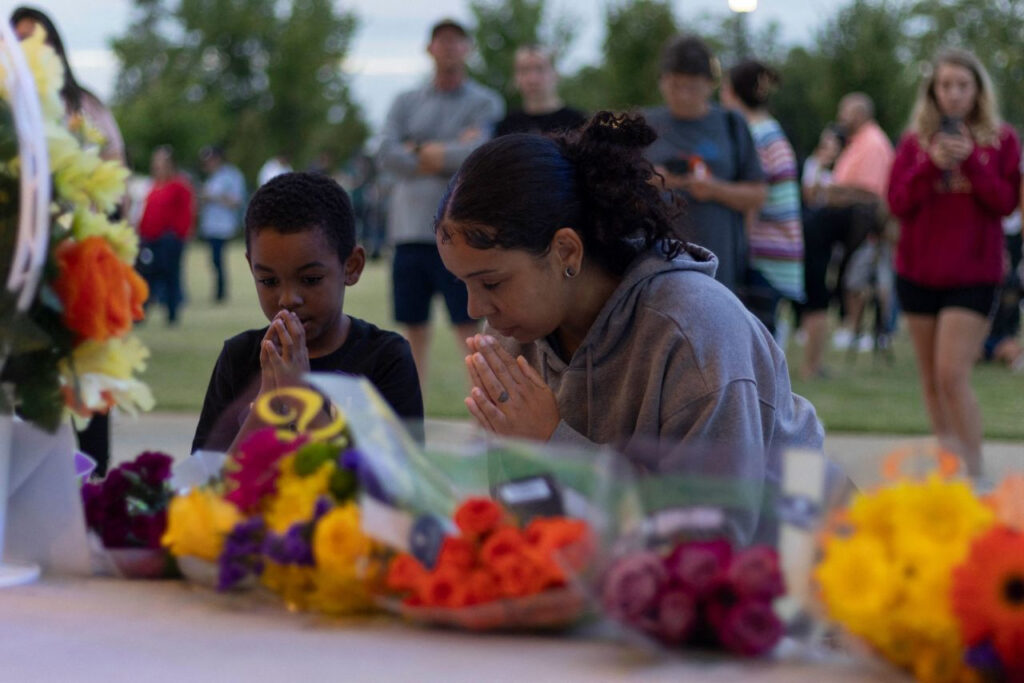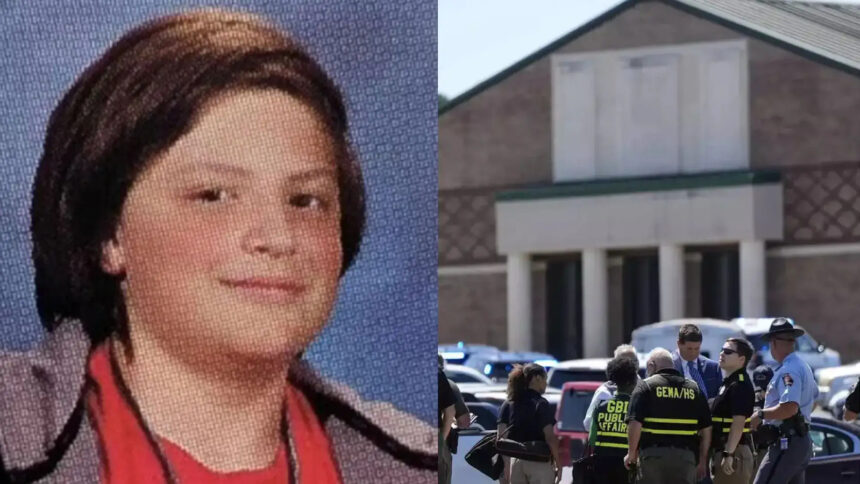The Georgia school shooting was a tragedy that sent shockwaves across the nation, leaving families shattered, communities grieving, and authorities searching for answers. What began as an ordinary day at Apalachee High School ended in unspeakable horror when a 14-year-old student, Colt Gray, carried out a deadly shooting, killing four people, injuring several others, and forever changing the lives of those who survived. In the aftermath of this tragedy, one burning question remains: what could have driven a young boy to commit such a horrific act?
This blog aims to explore the sequence of events that led to the deadly shooting, the background of the shooter, and the factors—social, familial, and psychological—that may have played a role in pushing a seemingly ordinary teenager to commit such a violent crime. We’ll also examine the broader societal issues that contribute to the alarming rise of school shootings in the United States and the measures that could have prevented such a catastrophe.
A Quiet Morning Turns Deadly
It was a typical morning at Apalachee High School in Winder, Georgia, when 14-year-old Colt Gray changed the course of the day—and the lives of many—forever. At 9:45 a.m., Colt, a quiet and introverted student, left his Algebra 1 class without drawing much attention. Just minutes later, gunshots echoed through the halls as Colt re-entered the school armed with an AR-style rifle. According to witness accounts, Colt attempted to enter his classroom again, but when a fellow student saw the gun, they had the presence of mind to lock the door and prevent him from entering.
This brief moment of hesitation did not stop Colt, however. He turned his attention to a nearby classroom, where he began to open fire indiscriminately. In the chaos, Colt unleashed 10 to 15 rounds, leaving four people dead and several others injured. The victims of this horrific attack included two 14-year-old students, Christian Angulo and Mason Schermerhorn, and two beloved teachers, Cristina Irimie and Richard Aspinwall. The tragedy was swift and devastating, yet it left a community and a nation grappling with an even deeper question: how could a 14-year-old boy do something so unthinkable?
The Weapon and the Father’s Role

As law enforcement and investigators began piecing together the events that led to the deadly attack, attention quickly turned to the weapon Colt used and how he obtained it. The AR-15-style rifle used in the shooting was legally purchased by Colt’s father, Colin Gray, who had gifted it to his son just a few months prior to the incident. This revelation ignited a firestorm of controversy and raised critical questions about gun ownership, parenting, and the responsibility of adults in preventing such tragedies.
Colin Gray, 54, was charged with multiple counts of involuntary manslaughter and cruelty to children following the shooting. Many were appalled to learn that despite Colt’s young age and clear emotional issues, his father had seen fit to provide him with access to such a dangerous weapon. In fact, it was later revealed that the authorities had already been warned about Colt’s potential for violence months before the shooting. In May 2023, Colt had been reported to the police for making an online threat to “shoot up a middle school,” yet no significant actions were taken at the time.
When questioned, Colin defended himself by claiming that Colt did not have unrestricted access to the firearms in their home. However, this defense fell flat in the eyes of many, given the catastrophic outcome. Was it negligence on the father’s part? Could the authorities have done more to intervene when the initial threat surfaced? These are questions that remain unanswered, but the implications of the father’s role in this tragedy cannot be ignored.
Colt Gray: The Psychological Profile
Understanding what drove Colt to commit such a horrendous act requires looking beyond the crime itself and delving into the psychological factors at play. What caused this young boy, by all accounts a quiet and reserved individual, to turn into a killer? Some believe that Colt’s behavior may be explained by a combination of emotional instability, social isolation, and mental health struggles.
Several red flags had been raised long before the shooting. In addition to the aforementioned online threats, Colt’s transfer to Apalachee High School appeared to be a significant turning point in his behavior. According to reports, Colt had difficulty adjusting to his new environment and even visited the school counselor’s office on his second day at the school to discuss feelings of anxiety. Friends and classmates described him as an introverted teen who struggled to fit in, which only compounded his sense of isolation.
While these challenges are not uncommon for adolescents, experts suggest that when combined with access to firearms, they can become a dangerous cocktail. Colt’s feelings of alienation, coupled with the ease of acquiring a weapon, may have contributed to his eventual decision to carry out the attack. The lack of sufficient mental health support, both at home and in school, is another factor that many point to as a critical failure in this tragic situation.
The Aftermath: A Community in Mourning
In the days following the shooting, the town of Winder, Georgia, was overwhelmed with grief and heartbreak. The loss of two promising young students and two dedicated teachers was felt deeply by the entire community. Vigils were held in honor of the victims, and an outpouring of support flooded in from across the nation. Families, friends, and colleagues of the victims struggled to come to terms with their devastating loss.
Among the victims were 14-year-old students Christian Angulo and Mason Schermerhorn, both of whom had bright futures ahead of them. The two teachers who lost their lives, Cristina Irimie and Richard Aspinwall, were beloved members of the school community. Cristina, 53, was a math teacher known for her kindness and passion for teaching. Richard, 39, was both a math teacher and the assistant football coach at Apalachee High School. He was remembered fondly by his students and players for his dedication and mentorship.
As the community came together to mourn, questions about how such a tragedy could have been prevented began to arise. Could the school have done more to protect its students and staff? Was there a way to intervene earlier, before Colt’s feelings of isolation and anger spiraled into violence? The answers to these questions are complex, but they highlight the need for greater attention to the mental health of students and the safety protocols in schools.
The Role of School Safety Measures

One of the major concerns raised after the shooting was the effectiveness of the school’s safety measures. Apalachee High School, like many schools across the country, had adopted a range of safety protocols designed to prevent or mitigate the impact of school shootings. One such measure was the use of a system called Centegix, which allowed teachers to press panic buttons in case of emergencies, notifying authorities immediately.
In this case, law enforcement responded quickly to the situation, but their swift action was not enough to prevent the loss of lives. This tragedy, like so many school shootings before it, raises critical questions about the adequacy of current safety measures. Should schools implement even stricter protocols, such as metal detectors or mandatory bag checks? Or are these measures simply band-aid solutions to a much deeper problem?
Many experts argue that focusing solely on safety measures ignores the root causes of school shootings, which often lie in issues of mental health, access to firearms, and societal neglect. While safety protocols are undoubtedly important, they cannot be the sole solution to preventing such tragedies. Addressing the underlying issues requires a more holistic approach, one that encompasses mental health support, parental responsibility, and legislative action on gun control.
Mental Health and Social Isolation: The Silent Contributors

One of the most significant factors in the case of Colt Gray, and in many school shootings, is the issue of mental health. Adolescence is a challenging time for many young people, marked by emotional ups and downs, social pressures, and academic stress. For some, these challenges are compounded by mental health struggles that go unrecognized or untreated.
In Colt’s case, there were clear signs of emotional distress leading up to the shooting. His anxiety and social difficulties were evident to those around him, yet it appears that these issues were not adequately addressed. The lack of mental health resources available to students in many schools is a critical concern that has been highlighted in the wake of this tragedy.
Additionally, social isolation is another silent contributor to the problem. Many young shooters share a common experience of feeling alienated from their peers, which can lead to a sense of anger and resentment. This sense of isolation can be exacerbated by online communities or social media platforms where individuals may be exposed to harmful ideologies or behaviors. In Colt’s case, his online threat to “shoot up a middle school” may have been a cry for help, one that was unfortunately overlooked.
Gun Control and the Debate Over Access to Firearms
The Georgia school shooting has once again reignited the national debate over gun control in the United States. At the heart of the issue is the question of how a 14-year-old boy was able to obtain such a powerful weapon and carry out such a devastating attack. While Colt’s father legally purchased the AR-15-style rifle, many believe that stronger gun control measures could have prevented the shooting.
Advocates for stricter gun laws argue that children and teenagers should not have access to firearms, particularly those as dangerous as semi-automatic rifles. They point to the fact that, had Colt’s father not purchased the rifle and given it to him, this tragedy might never have occurred. On the other side of the debate, gun rights advocates maintain that the responsibility lies with the individual, not the weapon, and that better mental health support is the key to preventing future shootings.
The intersection of gun ownership and mental health is a complex issue, but it is clear that more needs to be done to ensure that firearms do not fall into the hands of those who are at risk of committing violent acts. This could include stronger background checks, mandatory waiting periods, and restrictions on who can purchase and own firearms. While these measures are not a panacea, they are steps in the right direction toward reducing gun violence in schools.
Conclusion: Searching for Answers
The case of Colt Gray, like many school shootings before it, leaves us with more questions than answers. What drove a 14-year-old boy to commit such a horrific act of violence? Was it a failure of the school system, a lack of mental health support, or a breakdown in parental responsibility? Could stricter gun control laws have prevented the tragedy, or was this an inevitable result of a society grappling with deep-rooted issues?
While the answers to these questions may never be fully known, one thing is certain: the conversation surrounding school shootings must continue. We must do more to protect our children, to address the mental health crisis, and to take meaningful steps toward preventing future tragedies. Whether through legislative change, community support, or better mental health resources, we owe it to the victims of this and every other school shooting to search for solutions that will save lives.





